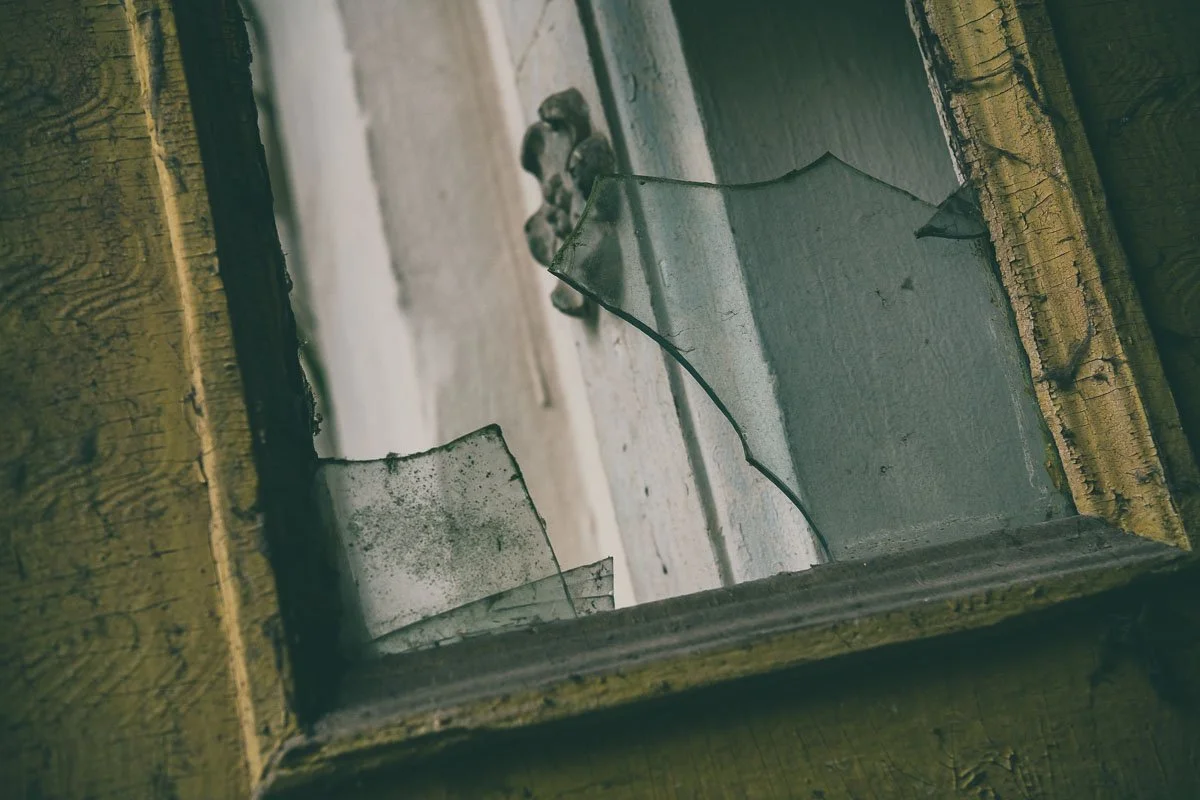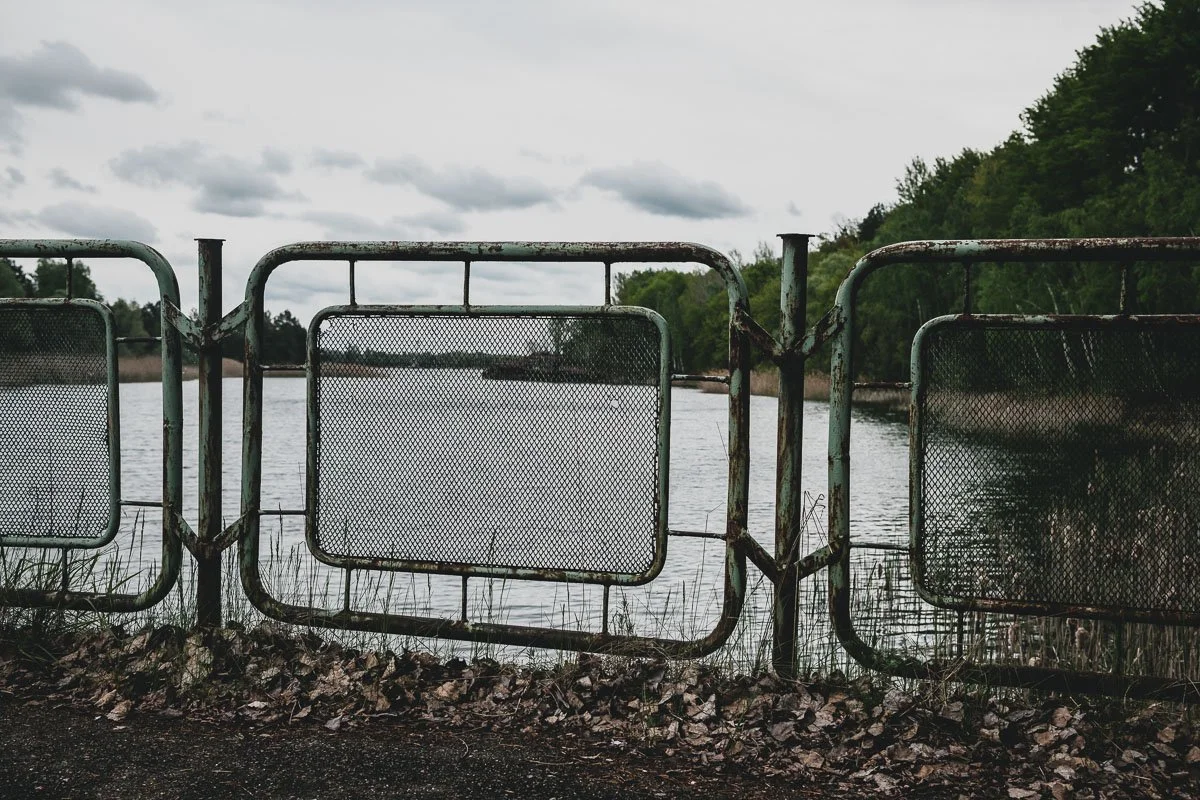Deep Life Reflections: Friday Five
Issue 137 - While We Were Fearing It
Why are we so drawn to fear?
Welcome to Issue 137 of Deep Life Reflections, where each Friday I share reflections on how to live more deeply, inspired by literature, cinema, and life itself.
This week’s issue falls on Hallowe’en. A holiday that on a superficial level is about fun, but peeling back the mask, it’s more about rehearsal. We dress up death to keep it at bay.
We play with fear because it’s all around us.
Earlier this week I had a dream. Not the Martin Luther King kind. Instead, Steven Spielberg told me, in pretty damning terms, that I didn’t have one single original idea. My sincere thanks to the legendary film director (and my subconscious) for the pep talk.
It doesn’t take a degree in psychology to recognise that kind of dream is a manifestation of fear. Spielberg as a cipher, the voice of self-doubt.
We seem drawn to fear.
Two thousand years ago, the Celtic pagans held an ancient festival called Samhain on the same day each year. They believed this was the day when the gap between the living world and the spirit world was as its narrowest, making it easier for the spirits of the dead to return. This was a day to fear. They lit huge bonfires and wore costumes to ward off ghosts. This is the origin of Hallowe’en.
There’s a similar but very different annual festival with ancient roots—Day of the Dead (Dia De Los Muertos). Unlike Hallowe’en, Dia De Los Muertos celebrates death. Ofrendas (offerings) are created by families to honour departed members, paying tribute to what they achieved in life.
If Hallowe’en fears, and even mocks, death, Dia de los Muertos makes peace and celebrates it.
Just like the dressing-up ritual of both holidays, fear rarely comes in its original clothing. There’s usually a costume or mask involved. In my dream, it wore a baseball cap, sat in a director’s chair, and called itself Spielberg. No blood was spilled yet it left a mark.
Different fears manifest themselves in different ways. Fear is also individual, specific, and deeply felt: One may be haunted by the terrible role reversal of birds as instruments of evil in Hitchcock’s classic, but be totally at ease with Jack Nicholson’s lunatic ravings and axe-grinding madness in The Shining. Fear can be inexplicable.
Most fears we name are surface level: spiders, heights, public speaking. But peel those back and they often trace back to one of three deeper sources:
the existential, the personal, and the cultural.
This week, I’m reflecting on each.
Join me for the Friday Five.
1. The Existential
Fear of oblivion and irrelevance
It’s not death that terrifies most of us. It’s becoming invisible. Being passed over. Politely ignored in a meeting or quietly removed from a WhatsApp group. We fear irrelevance. Today’s drive for purpose is just a modern name for an ancient hunger: to be something.
You see it in retired athletes, who go from standing ovations to empty calendars. In aging parents whose grown children stop asking for advice. In artists and writers terrified that their last good idea is the final one on an empty conveyor belt.
To combat this fear, we reinvent ourselves. New wardrobes. New jobs. New goals. But this reinvention has a lingering shadow. It tricks us into thinking this version of us is the final cut. Psychologists call this “the end of history illusion”—the false belief that who we are now is who we’ll always be. We massively underestimate our capacity for more change.
It's a comforting delusion. The reality is change is always happening within and around us. Which means any obsession with leaving a legacy or impact is built on quicksand. Who we are and who we’ll be remembered as are often two separate things. We don’t get to choose the second. Just ask George Orwell who wanted to be remembered as a novelist. Instead, he’s remembered as a prophet, his name a warning—Orwellian—not a signature.
We can fend off this existential fear of irrelevance by making it less about something to achieve and more about something to offer. Giving someone a few minutes of your time will always matter more than you think. Relevance is in the moment.
2. The Personal
Fear of exposure and being unlovable
This is where shame lives. It’s the fear behind social anxiety, performance pressure, or being found out.
One of the best screen performances of personal fear is Robert De Niro as heavyweight boxing champion Jake La Motta in Raging Bull. La Motta’s entire persona—violent, jealous, competitive, sexually paranoid—is armour. He’s a man who can take brutal beatings in the ring but emotionally is as fragile as the wings of a butterfly. Pain for La Motta is weakness, and nothing is more painful than being seen. As soft, needy, human.
The tragedy isn’t that Jake LaMotta is unloved; it’s that he makes himself unlovable trying to prove that he matters. The harder he fights to prove he’s worthy, the more he confirms his own unworthiness. It’s a cruel paradox. And unfortunately, not a rare one.
Our fear of being unlovable is really a fear of being ordinary. We don’t want to be seen as average. To be average is to be invisible. We’ve got comfortable with the idea that average people aren’t worthy of devotion. Love must be earned through achievement, brilliance, or uniqueness. Take a look at any popular social media profile and you’ll see every effort against being seen as average. This is why exposure feels so dangerous: it threatens to reveal we’re not special.
The way out isn’t through constant self-improvement. It’s self-acceptance. The unconditional kind. I’m reminded of a fine scene in Good Will Hunting when Robin Williams’ character, Sean, speaks to Will, the troubled young genius:
“You’re not perfect, sport, and let me save you the suspense: this girl you’ve met, she’s not perfect either. But the question is whether or not you’re perfect for each other.”
It’s a great line because Will fears exactly this: that if someone truly sees him, they’ll walk away. It’s made all the more poignant by who’s saying it. Robin Williams seemed like a man universally loved and yet was battling his own private darkness.
3. The Cultural
Fear of erosion: values, norms, identity, memory
In the early 1960s, writer Philip Roth observed, “You can’t write good satirical fiction because reality will quickly outdo anything you might invent.”
This fear isn’t about death or rejection, but about disintegration. The slow collapse of the stories, norms, and shared values that once made the world feel coherent.
The monsters are no longer supernatural or confined to comic books or horror flicks. They’re present in our world of the real: climate collapse, AI dread, the death of democracy, nuclear weapons, health pandemics.
These all play into our fear that something essential is slipping away. Not just safety or certainty but meaning itself. The fear of losing our values, identity, and even decency. Conspiracy theories suck people into black holes, perhaps never to return. With millions of social media accounts and thousands of podcasts to choose from, “journalists can’t even establish what’s true, let alone what people should think about what’s true,” as the journalist and author George Packer wrote this week.
We are more sceptical and cynical than ever before.
Or at least it feels like that.
This cultural fear is both individual and collective. It’s what shapes the tone of conversations in coffee shops. It pulls on our sense of identity like a backpack filled with bricks. And it’s hard to put down. It’s also the fear that might get you into the most trouble. It’s all around us, like a fog that’s blown in from an otherworldly place.
How do we escape the fog?
It’s hard to escape fog.
We just slow down, switch on our fog lights so we can see better, and turn off the music so we have all our senses.
And try not to run anyone over.
Fear has utility. It keeps us alert.
We feel it. We speak about it. We write about it.
I’ll leave you with a poem by Emily Dickinson. Poem 1277.
While we were fearing it, it came—
But came with less of fear
Because that fearing it so long
Had almost made it fair—
There is a Fitting—a Dismay—
A Fitting—a Despair
’Tis harder knowing it is Due
Than knowing it is Here.
They Trying on the Utmost
The Morning it is new
Is Terribler than wearing it
A whole existence through.
A Question for You
When have you surprised yourself by doing what you feared anyway?
A note on this week’s photography
This week’s eerie imagery comes from my visit to Chernobyl. I visited the former nuclear power plant and surrounding town of Pripyat in 2021. You can read about my experience here.
Pass It On
Thanks for reading and reflecting. If you enjoyed the issue, please leave a comment below. I’d love to hear.
Deep Life Reflections travels best when it’s passed hand to hand.
If you know someone who might enjoy it, feel free to share this issue with them:
👉🏻 https://www.deeplifejourney.com/deep-life-reflections/31-october-2025
Or, if you’d like to invite them to join directly, here’s the subscription link:
👉🏻 https://www.deeplifejourney.com/subscribe
You can read all previous issues of Deep Life Reflections here.




